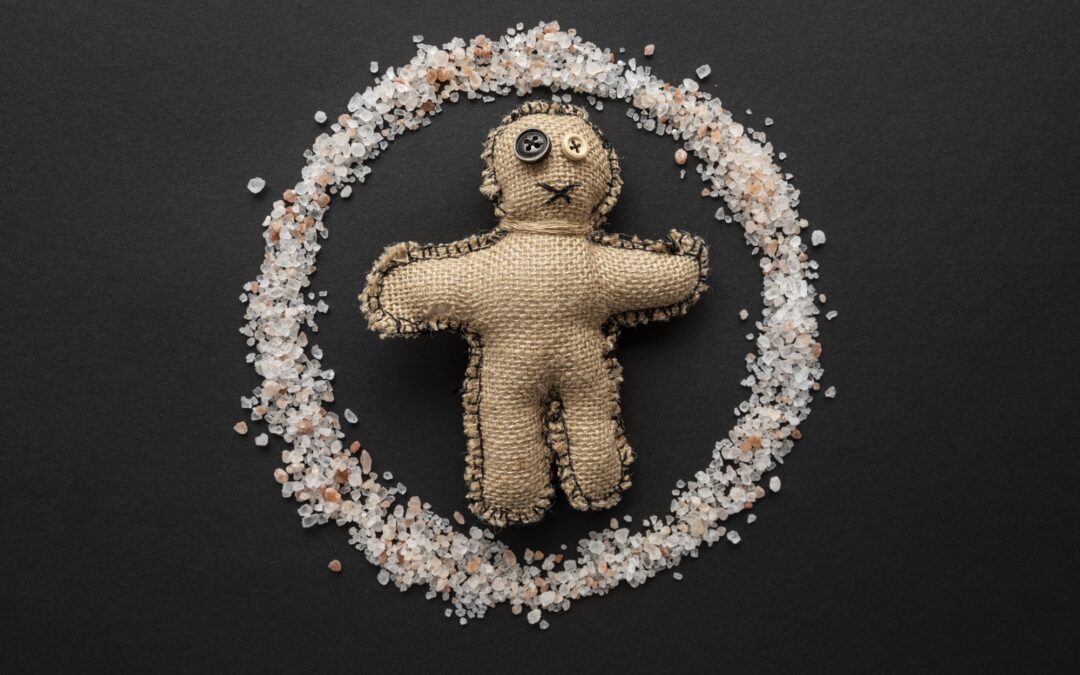Voodoo is based on the belief that one Supreme is responsible for the creation of the cosmos; nevertheless, this Being is too far from having a personal relationship with its followers. Followers of a certain group worship the loa or other minor gods in this manner to get direction for their life. The spirits of predecessors, animals, and common abilities, as well as the spirits of goodness and sneakiness, are collectively known as the loa. The ritual that takes place exactly one year and one day following the death of a close family member is a remarkable example of the voodoo belief system.
An introductory tenet of voodoo is the belief that there are two distinct halves to the human soul. The ti-bon-ange, also known as the “minimum great holy messenger,” and the gross-bon-ange each make up one of the two portions (extraordinary great heavenly attendant). The gross-bon-ange is the body’s life drive, and the gros-bon-ange must return to the universe after the body has passed away. To guarantee that the ti-bon-ange has a peaceful slumber, the gros-bon-ange is required to go through an elaborate and expensive ritual that culminates in the disavowal of a large animal, such as a bull, to appease the ti-bonange.
This is done so that the ti-bon-ange may have a peaceful slumber. If the ti-bon-ange soul is not allowed to be fulfilled and granted a peaceful rest, the soul will remain earthbound for eternity and hasten the onset of illness or disaster in other people.
Voodoo Rituals
Voodoo is a society that both male and female practitioners hold. There are many steps involved in beginning to fulfill its clerical tasks. They are primarily responsible for healing, rituals, religious ceremonies to summon or appease the spirits, initiating new clerics and priestesses, reading fortunes, interpreting dreams, casting spells, bringing forth guarantees, and creating potions for a variety of reasons. These concoctions may be used for everything from love charms to death spells; the only requirement is that they have a strong charge. In several voodoo rituals and practices, “enter objects” is common. The land area affected by the cleric’s abilities is referred to as the ward.
A diverse display of items surrounds the sacrifice table in the sanctuary or hornwort. A peristyle is a roofed or open place where people generally gather for voodoo rites. Candles, food, cash, talismans, one-of-a-kind pieces of jewelry, stylized rattles, pictures of Catholic holy people, jugs of rum, chimes, banners, drums, sacred stones, and blades are some of the items that would be used as part of the rituals that take place at the sacrificial table. Other items that would be present on the table include items that have significant symbolic meaning, such as holy.
Voodoo And Christianity
When contrasting the practice of Christianity with that of the Voodoo belief, one of the most notable distinctions is that Christians do not need to perform complex or costly rituals to appease God. Christians believe that God, out of compassion, sent His Son Jesus to earth to do whatever act of atonement that would be required to extinguish evil and elevate God’s love. Those who legally worship God have a strong bond with the Almighty. He is more like a brother to us than any other relative.
There Are Several Ways To Spell The Word “Voodoo”:
Vodun, vaudin, voudoun, vodou, and vaudoux. It is a long-standing religion that is practiced by 80 million people all around the globe and is continuing to grow in adherents. Voodoo practitioners are at a loss to understand why their faith is so widely misunderstood because of the many gods, demonic affiliations, and creature penances (human sacrifices in the Petro variety of voodoo, which is associated with the dark enchantment kind of voodoo).
Read More: Effective Good Luck Spells That Will Change You Forever
Voodoo’s Approach To The Concept Of The Soul
Voodoo relies heavily on its connection to the spirit world. According to traditional Voodoo beliefs, the spirit is composed of two parts: the gros bon ange and the ti bon ange. Life compels something that all individuals have in common, and its name translates to “great gatekeeper wonderful messenger.” It is said to enter the body during childbirth and exit upon death when it is thought to return to the Gran Met, also known as the pool of life constraint. The ti bon ange, also known as the “small gatekeeper holy messenger,” is the component of a man’s spirit responsible for containing his unique personality traits.
Conclusion
In conclusion, the repute that voudon has garnered as a sinister religion is, to a large measure, unwarranted. Even though certain voudon rites include animal sacrifices, this practice is not particularly unique; various other religious practices, such as those associated with Christianity, Islam, Judaism, and Hinduism, also use animal phlebotomy.

